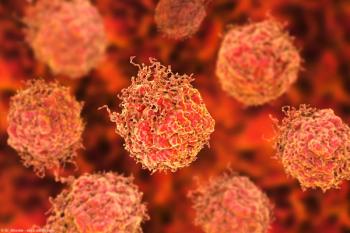
Testis biopsy: Integral to workup of infertile men
Montreal--Spermatogenesis markers that can be easily obtained from a noninvasive testis biopsy may predict which patients will respond to surgical varicocele repair. Testis biopsy, therefore, should be part of the regular workup for male infertility patients, suggest the authors of the 2005 Society for Male Reproduction and Urology Prize paper presented here at the American Society for Reproductive Medicine annual meeting.
The research points out that urologists can help infertile patients, according to lead author Susan Benoff, PhD, director of Fertility Research Laboratories and an associate professor of obstetrics and gynecology and cell biology at the North Shore-Long Island Jewish Institute for Medical Research, Manhasset, NY.
"The infertile couple's primary contact is generally a reproductive endocrinologist who [in many cases] is going to treat it with intracytoplasmic sperm injection. This, to me, is a very non-individualized way of treating patients. It also puts women, often, at greater stress," she said. "If we can treat the male, it's often less invasive, less costly than treating the female, so we're helping both partners in this regard."
Co-author Jarrod Rosenthal, MD, a medical resident at the North Shore-LIJ Institute for Medical Research, presented the study results at the ASRM meeting. Joel L. Marmar, MD, professor of urology at Robert Wood Johnson Medical School, New Brunswick, NJ, was another co-author of the work.
Significant correlations
To date, semen and marker data are available for 78 of the post-varicocele patients. Among these patients, the median apoptosis was 17%, compared with 8.7% for controls (p<.05). All other markers were significantly correlated with apoptosis. Overall, 53.6% of patients had abnormal values for testicular cadmium, 54.5% had L-VDCCL-type calcium channel microdeletions, 100% had an abnormal boundary layer (BL) thickness, and 44% had absent CREM?.
"People have always questioned whether the very severe oligospermic men, those who have counts less than 5 million/mL, are a different group of patients than those who are mildly oligospermic," said Dr. Benoff. "What we show here is that, according to these molecular markers, they don't differ. Both groups are capable of responding to varicocele surgery."
Investigators considered 50% or greater increase in postoperative sperm density as successful, as men who achieved pregnancy had all achieved this degree of increase. Among men with a sperm count under 5 million/mL, preoperative median sperm density was 2.0 million/mL and increased to 5.0 million/mL after surgery. Among those with a sperm count over 5 million/mL, median preoperative sperm density was 14.0 million/mL, which increased to 22.0 million/mL postoperatively. This translates to a 67% increase in the lower sperm count group, compared with a 36% increase in the higher sperm count group (p<.008).
Newsletter
Stay current with the latest urology news and practice-changing insights — sign up now for the essential updates every urologist needs.


















